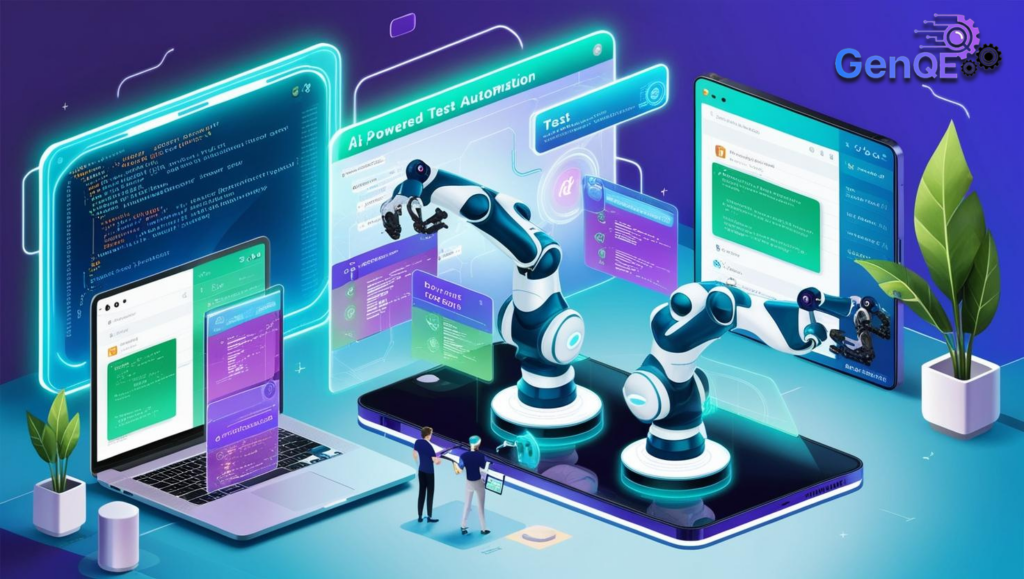
Introduction
Software testing has evolved rapidly, with AI-powered test automation leading the charge in 2025. Traditional testing methods struggle to keep up with the pace of modern software development, but AI-driven approaches are revolutionizing the landscape. By automating repetitive tasks, predicting defects, and optimizing test coverage, AI is transforming how teams ensure software quality.
In this article, we’ll explore how AI is reshaping test automation, the benefits it offers, and the challenges that come with its adoption.
1️⃣ The Need for AI in Test Automation
With increasing software complexity, manual and script-based automation testing falls short in ensuring speed and efficiency. Some key challenges include:
⚠ Frequent Code Changes — Manual scripts break often with agile development.
⚠ Scalability Issues — Large applications require extensive test coverage.
⚠ Time-Consuming Maintenance — Traditional test scripts need constant updates.
⚠ Flaky Tests — Test scripts fail due to minor UI changes.
AI-powered automation addresses these challenges by enabling self-healing tests, adaptive learning, and predictive analytics, making testing more efficient and reliable.
2️⃣ How AI Enhances Test Automation
✅ Self-Healing Tests — AI detects UI changes and updates test scripts dynamically.
✅ Intelligent Test Case Generation — AI analyzes historical defects and user behavior to create better test scenarios.
✅ Defect Prediction & Risk Analysis — AI predicts high-risk areas based on past failures, improving test prioritization.
✅ Test Optimization — AI eliminates redundant test cases, ensuring efficient execution.
✅ Continuous Testing in CI/CD — AI integrates seamlessly into DevOps pipelines, enabling real-time testing.
3️⃣ AI-Driven Tools Revolutionizing Testing
Several AI-based tools are transforming test automation:
🔹 GenQE — Uses AI to optimize test case execution and defect analysis.
🔹 Testim — AI-driven UI testing with self-healing capabilities.
🔹 Mabl — Intelligent test automation with auto-maintenance.
🔹 Functionize — AI-powered cloud testing for scalability.
🔹 Applitools — Visual AI testing to detect UI inconsistencies.
These tools reduce manual effort, improve accuracy, and accelerate release cycles.
4️⃣ Challenges of AI in Test Automation
Despite its advantages, AI-driven testing has challenges:
🔸 Initial Implementation Complexity — AI requires training and historical data.
🔸 False Positives/Negatives — AI models may not always interpret changes accurately.
🔸 Skill Gap — Testers need to upskill in AI and ML technologies.
🔸 High Initial Costs — AI-based tools may have higher upfront investment costs.
However, as AI technology matures, these challenges are being addressed, making AI-powered testing more accessible.
5️⃣ The Future of AI in Software Testing
🚀 Hyperautomation — Combining AI, ML, and RPA to automate every aspect of testing.
🔍 AI-Driven Test Data Management — Smart data generation and privacy compliance.
📊 Predictive Analytics for Bug Prevention — AI will forecast defects before they occur.
🤖 Autonomous Testing — AI will execute tests without human intervention.
AI-powered test automation is not just an enhancement — it’s the future. As AI becomes more sophisticated, software testing will move towards greater efficiency, accuracy, and reliability.
Conclusion
AI in test automation is revolutionizing the industry, reducing manual efforts, improving test accuracy, and accelerating software delivery. While challenges exist, the benefits far outweigh the drawbacks.
💡 What are your thoughts on AI in test automation? Have you implemented AI-driven testing in your projects? Share your experiences in the comments!